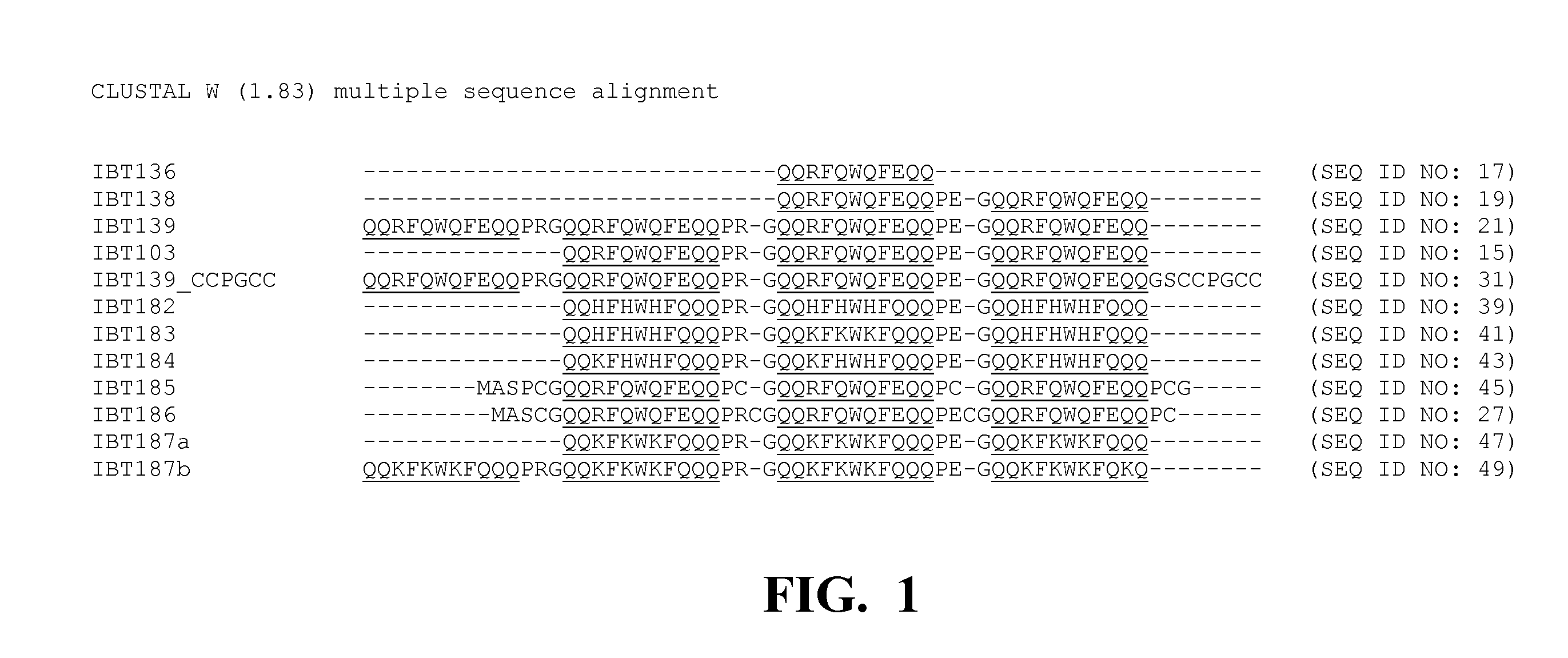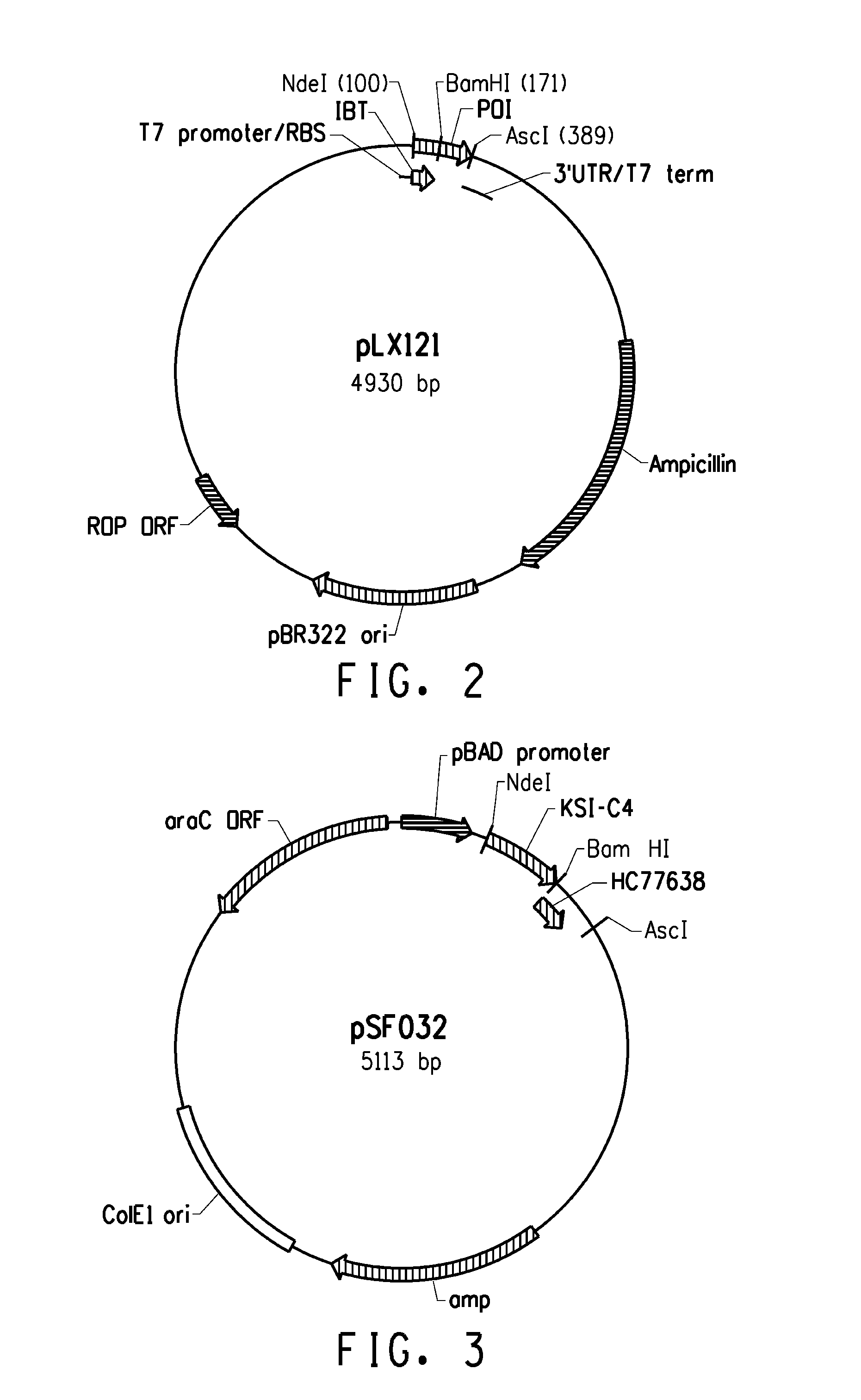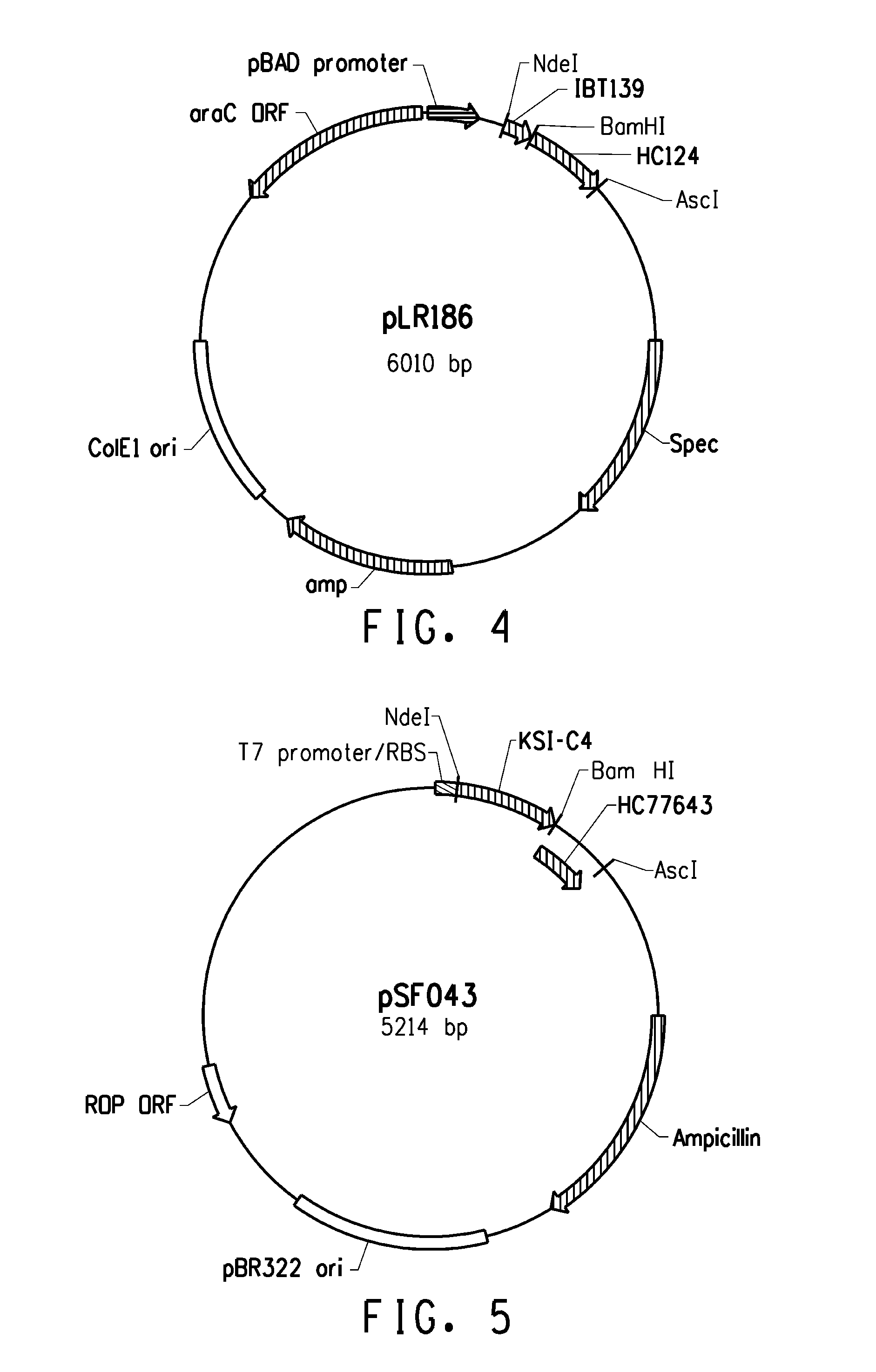Solubility tags for the expression and purification of bioactive peptides
a technology of bioactive peptides and solubility tags, which is applied in the field of protein expression and purification from microbial cells, can solve the problems of limited production capacity, poor yield, and high cost of methods, and achieve the effect of simple purification of short peptides and increased expression
- Summary
- Abstract
- Description
- Claims
- Application Information
AI Technical Summary
Benefits of technology
Problems solved by technology
Method used
Image
Examples
example 1
Construction of Expression Plasmids
[0221]Several expression systems were used to produce the fusion proteins in an E. coli host cell. One expression system was based on E. coli strain BL21-AI (Invitrogen) in combination with a T7-based expression vector (pLX121; SEQ ID NO: 1; FIG. 2) wherein expression of the T7 RNA polymerase is controlled by the araBAD promoter. Another expression system was based on E. coli MG1655 (ATCC 46076™) derived strain in combination with a pBAD-based expression vector (pSF032, FIG. 3, SEQ ID NO: 2 and pLR186, FIG. 4, SEQ ID NO: 51) wherein the endogenous chromosomal copy of the araBAD operon was deleted (the modified E. coli MG1655 strain comprising a disruption in the endogenous araBAD operon is referred to herein as E. coli strain KK2000). The 3′ region downstream and operably linked to the respective promoter in each of the vectors was designed to facilitate simple swapping of the DNA encoding the respective inclusion body tag and / or the peptide of int...
example 2
Construction of Various Peptides of Interest
[0231]Five multi-block hair binding peptides were designed with the following amino acid sequences. Construction of multi-block hair binding peptides have been reported (see co-pending U.S. patent application Ser. Nos. 11 / 389,948 and 11 / 074,473). The soluble multi-block peptides (i.e. the “peptides of interest”) were used to evaluate the present inclusion body tags. Each of the multi-block hair binding peptides comprises one or more hair binding domains. The functional binding domains are provided in Table 1. Hair-binding domains (bold) include A09 (IPWWNIRAPLNA; SEQ ID NO: 3; also found to bind to polymethylmethacrylate), KF11 (NTSQLST; SEQ ID NO: 4), and D21′ (RTNAADHP; SEQ ID NO: 5). The affinity domains with the multi-block peptides are typically separated by short peptide spacers. The DP acid cleavable moieties are italicized.
[0232]
TABLE 1Soluble Peptides of Interest Used to Evaluate the Present Inclusion Body TagsFormulaPeptide(Funct...
example 3
Identification of Inclusion Body Tags
[0233]Several fusion partner sequences (“inclusion body tags”) were evaluated for their ability to drive the resulting fusion peptides (when operably linked to a short, generally soluble peptide of interest) into intracellular insoluble inclusion bodies. Various hair-binding peptide constructs (HC77607, HC77638, HC77643, and HC77681) were cloned into the tag library (parent plasmid pLX121, see sequence below). Expression of the fusion products are driven from a T7 promoter. In E. coli BL21-AI, expression of the T7 RNA polymerase gene is under control of the araBAD promoter (i.e. arabinose inducible expression). In addition, HC77638 was also cloned into a tag library composed of the same tags, but different parent plasmid (parent pSF032, see sequence below) that drives expression of the fusion products from a araBAD promoter. The genes encoding the soluble hair binding peptides (e.g., peptides of interest) were cloned downstream of the tag sequenc...
PUM
| Property | Measurement | Unit |
|---|---|---|
| temperature | aaaaa | aaaaa |
| pH | aaaaa | aaaaa |
| temperature | aaaaa | aaaaa |
Abstract
Description
Claims
Application Information
 Login to View More
Login to View More - R&D
- Intellectual Property
- Life Sciences
- Materials
- Tech Scout
- Unparalleled Data Quality
- Higher Quality Content
- 60% Fewer Hallucinations
Browse by: Latest US Patents, China's latest patents, Technical Efficacy Thesaurus, Application Domain, Technology Topic, Popular Technical Reports.
© 2025 PatSnap. All rights reserved.Legal|Privacy policy|Modern Slavery Act Transparency Statement|Sitemap|About US| Contact US: help@patsnap.com



